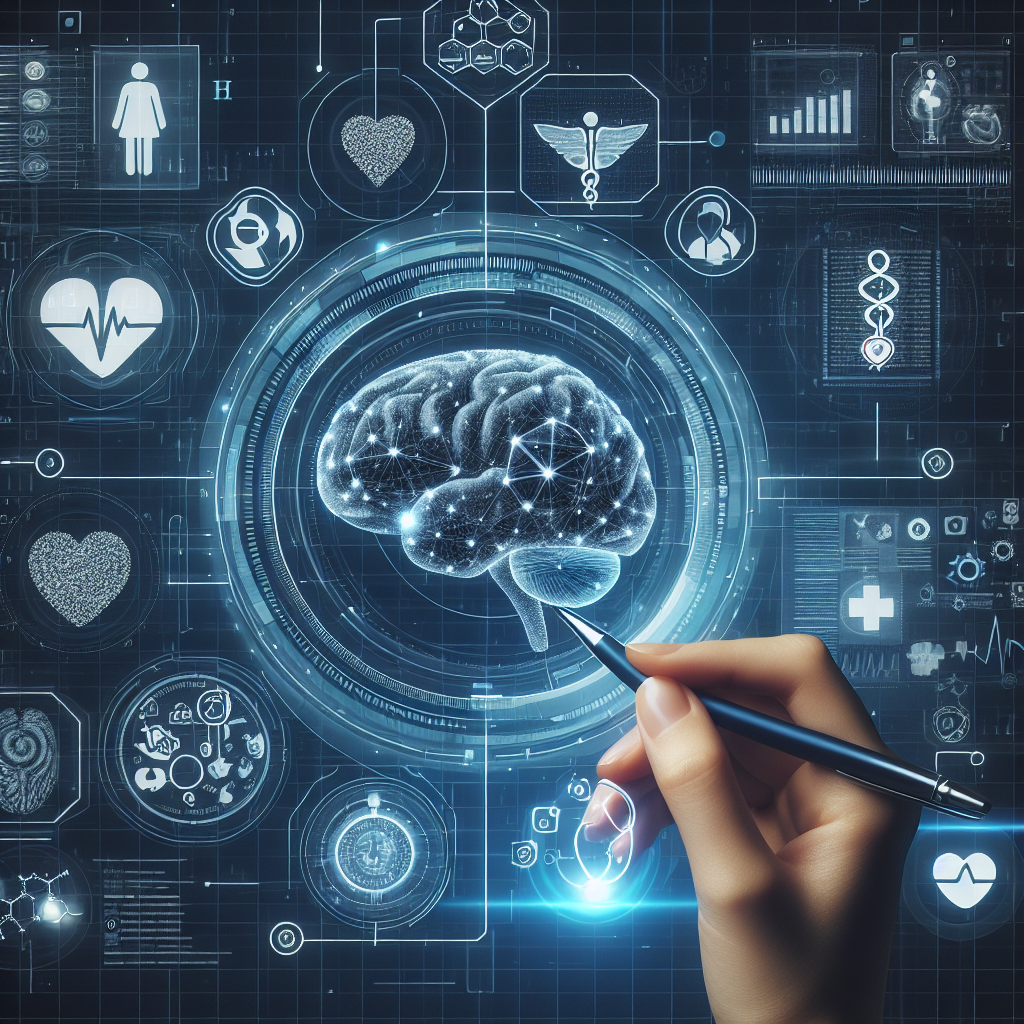AI (Artificial Intelligence) has been making significant waves in the healthcare industry in recent years, transforming the way healthcare is delivered and improving patient outcomes. From diagnostics to treatment planning, AI is revolutionizing the way healthcare is delivered, making it more efficient, accurate, and personalized. In this article, we will explore how AI is transforming healthcare delivery and the benefits it brings to patients and healthcare providers.
1. Improved Diagnostics
One of the most significant ways AI is transforming healthcare delivery is through improved diagnostics. AI algorithms can analyze vast amounts of medical data, including patient records, lab results, and imaging studies, to assist physicians in making more accurate diagnoses. AI can detect patterns and trends in data that may not be apparent to human clinicians, leading to earlier detection of diseases and more personalized treatment plans.
For example, AI-powered imaging tools can analyze medical images such as X-rays, MRIs, and CT scans to detect abnormalities and assist radiologists in making faster and more accurate diagnoses. This can help reduce errors and improve patient outcomes by ensuring that diseases are detected and treated at an earlier stage.
2. Personalized Treatment Plans
AI is also enabling healthcare providers to develop more personalized treatment plans for patients. By analyzing a patient’s medical history, genetic makeup, and lifestyle factors, AI algorithms can help physicians tailor treatment plans to individual patients’ needs. This can lead to more effective treatments and better patient outcomes.
For example, AI-powered precision medicine tools can analyze genetic data to identify specific mutations that may be driving a patient’s disease. This information can help healthcare providers choose the most effective treatments, such as targeted therapies or immunotherapies, that are more likely to be successful for that particular patient.
3. Predictive Analytics
AI is also being used to predict patient outcomes and identify high-risk patients who may benefit from early intervention. By analyzing data from electronic health records, wearables, and other sources, AI algorithms can identify patterns that may indicate a patient is at risk of developing a particular condition or experiencing a complication.
For example, AI-powered predictive analytics tools can analyze a patient’s vital signs, lab results, and other data to predict the likelihood of sepsis developing. This information can help healthcare providers intervene early to prevent sepsis or provide more aggressive treatment to improve outcomes.
4. Remote Monitoring and Telemedicine
AI is enabling healthcare providers to monitor patients remotely and deliver care through telemedicine platforms. By analyzing data from wearable devices, AI algorithms can monitor patients’ vital signs, activity levels, and other metrics to detect changes that may indicate a deterioration in health. This can help healthcare providers intervene early and prevent complications before they become serious.
Telemedicine platforms powered by AI can also provide patients with access to healthcare services from the comfort of their own homes. Patients can consult with healthcare providers via video calls, receive prescriptions, and access medical advice without having to visit a clinic or hospital. This can improve access to care for patients in remote or underserved areas and reduce the burden on healthcare facilities.
5. Operational Efficiency
AI is also transforming healthcare delivery by improving operational efficiency and streamlining administrative processes. AI-powered tools can automate tasks such as scheduling appointments, processing insurance claims, and managing medical records, freeing up healthcare providers to focus on patient care.
For example, AI-powered chatbots can assist patients with scheduling appointments, answering common questions, and providing information about their healthcare options. This can reduce the workload on administrative staff and improve the patient experience by providing faster and more convenient access to care.
FAQs
Q: How is AI being used in healthcare delivery?
A: AI is being used in healthcare delivery in a variety of ways, including improved diagnostics, personalized treatment plans, predictive analytics, remote monitoring, telemedicine, and operational efficiency.
Q: What are the benefits of using AI in healthcare delivery?
A: The benefits of using AI in healthcare delivery include improved patient outcomes, more personalized treatment plans, early detection of diseases, reduced errors, better access to care, and increased operational efficiency.
Q: Are there any potential risks or drawbacks to using AI in healthcare delivery?
A: Some potential risks of using AI in healthcare delivery include concerns about data privacy and security, bias in algorithms, and the potential for AI to replace human clinicians. It is essential to carefully consider these risks and implement safeguards to ensure that AI is used responsibly and ethically.
In conclusion, AI is transforming healthcare delivery in numerous ways, improving patient outcomes, and streamlining administrative processes. By harnessing the power of AI, healthcare providers can deliver more personalized, efficient, and effective care to patients, ultimately leading to better health outcomes for all.

